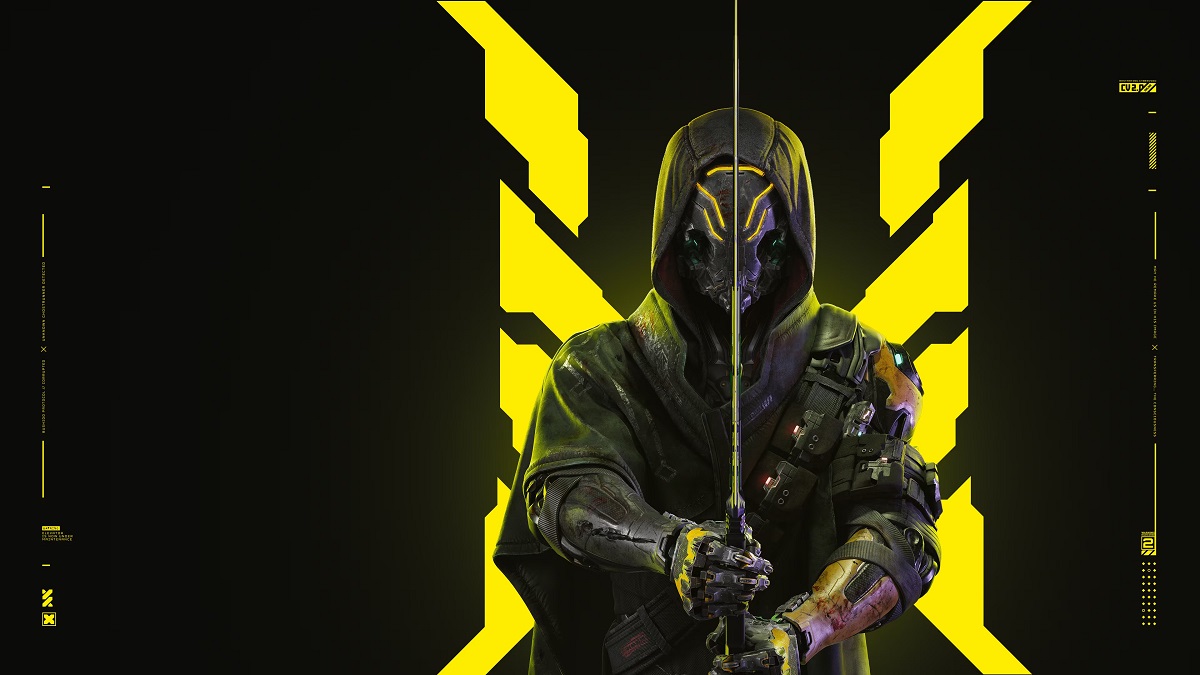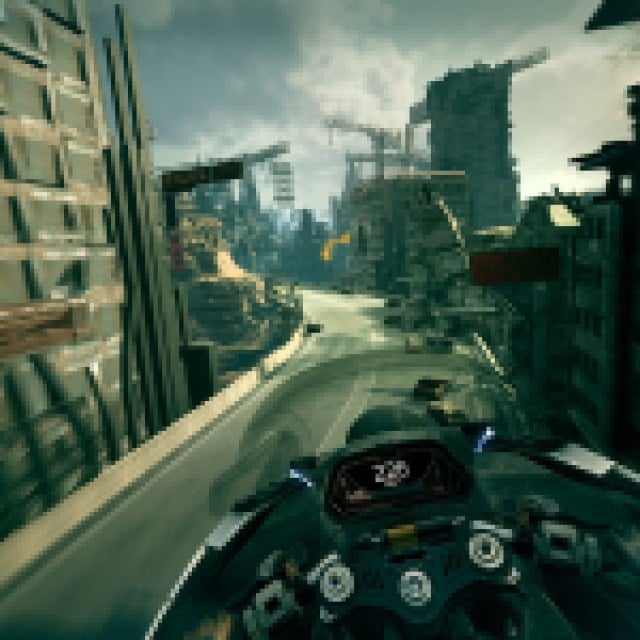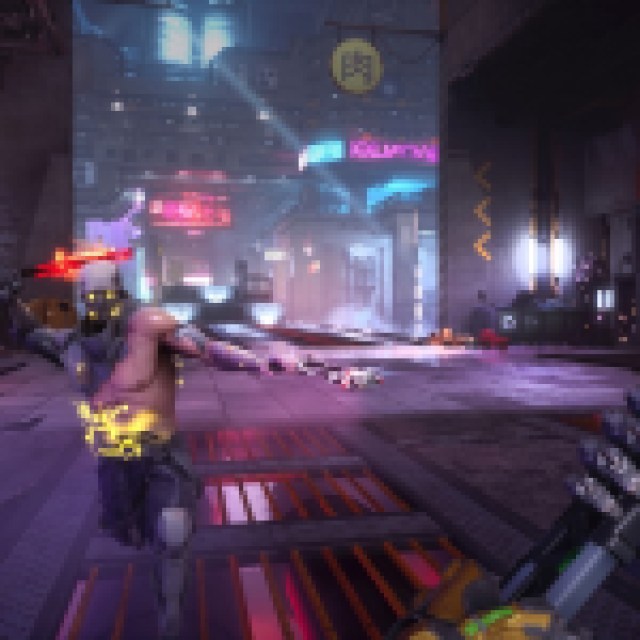Ghostrunner 2 Review | A Blade Dancer’s Dream
Everyone's favorite cyborg ninja is back.

I’d be lying if I said I didn’t go into Ghostrunner 2 with at least a little skepticism. A sequel for a game released three years after the previous entry, when most games these days can take considerably longer to create, doesn’t invoke a ton of confidence. While it hasn’t quelled every one of my concerns, Ghostrunner 2 is mostly what I hoped it would be.
A Journey Through the Ins and Outs of Dharma Tower


Ghostrunner 2 steps us back into the role of Jack/Ghostrunner a year after the first game’s events. The Keymaster Mara has been felled and a two-decade reign of tyranny has been ended. However, it isn’t all happy ever after, seeing as Mara wasn’t the sole problem for the tower. Everyone and their cybernetic dog are vying for the power vacuum left behind, though one group is proving to hold a brighter future than the rest: Zoe and her Climbers. Her new group, aptly named the Interface Council, seeks to rally humanity under one banner. It’ll take a lot more work than a desire to see it through, however.
While it isn’t a farfetched idea to have Ghostrunner 2 focus more on the plot than the original (Jack is finally talking, after all), I am surprised by just how much emphasis they put into the story here. There’s a whole new mini-hub with NPCs to speak with between outings, and characters will talk about a lot more during the missions themselves.
However, this transition to a focus on the story hasn’t gone without a hitch. Ghostrunner’s story was passable at best, offering a way to transition from point A to point B without anything meaningful being spouted out. Ghostrunner 2 follows that same trend, though the extended focus has made it more of an eyesore than it was previously. On the bright side, the final mission benefits from this by bringing dialogue that enters “so bad it’s hilarious” territory. For obvious reasons, I’ll let you see it for yourself.
“Bountiful options are available for various combat encounters, and more environmental tools like hazards and jump pads have unlocked different ways to tackle a situation.”
Since Ghostrunner 2’s plot can mostly be tuned out in favor of focusing on gameplay, none of this is a glaring issue. However, I’d be lying if I said I didn’t wish there was more done with it. Some of the core themes are commonly trodden ground, sure, but it would’ve done a lot more if they were explored in a more meaningful way.
Slicing and Dicing Never Felt This Good


While the story does leave a lot to be desired, the gameplay is a much different scenario. That same arena-based slaughter that encapsulates the first game’s loop is all here, yet has seen plenty of tweaks to elevate it to new levels. A new block ability lets you send bullets back at your enemies if timed right, new challenges within certain rooms allow you to switch things up, and even the classic abilities have seen a welcome uplift in utility. The Shuriken, for example, can now stun enemies and create a grapple point to close some distance. I saw myself using it the most throughout my run, alongside the new ultimates system, bringing abilities like Bullet Time to the table.
The new motorcycle sections also feel great, and even solve some of the pitfalls of other “setpiece” sections. Where turret and vehicle sections in other games offer a change of pace over any sort of challenge, Ghostrunner 2 says, “Why not both?” offering nail-biting combat and a sense of spectacle when you’re flying down a wall at 240 MPH. While they likely won’t, I genuinely hope more developers learn that spectacle and challenge are allowed to co-exist.
All of this is wrapped together with a more open-ended level design, offering multiple ways to tackle objectives. Bountiful options are available for various combat encounters, and more environmental tools like hazards and jump pads have unlocked different ways to tackle a situation. It plays nicely with the die-retry flow that’s emblematic of the game’s combat design, letting you piece together a plan for tearing apart a room of enemies piece by piece.
However, Ghostrunner 2 has its flaws that don’t hold the game back completely but did hamper my enjoyment. The first significant issue comes with the new upgrade system, which has done away with the Tetris block-style upgrade blocks and put in a more straightforward drag-and-drop system that lets you slot in more upgrades over time. This isn’t entirely bad since it’s a lot more accessible for new players. This issue comes with how that upgrade system is utilized, as you often won’t feel like you’re missing out when not taking the other upgrades. There’s a clear set of better upgrades for your character, so you won’t ever find difficult choices to make like how the old system was.
The other issue stems from its polish, which is by far not the worst I’ve seen but isn’t great either. The motorcycle tends to get stuck on certain objects, select upgrade kiosks are entirely unusable, and framerate dips can do harm during crucial moments. It never went as far as crashing my game outright, but it was enough to get annoying at times. While it isn’t a bug, I felt it was worth noting here that completing Ghostrunner 2 wipes your save file. It’s not cool, especially since I wanted to return and snag some collectibles.
Scale and Beauty Go Hand in Hand


You’d have a fairly difficult time complaining about the visual style of the first Ghostrunner (outside of Cybervoid looking a tad crude at times.), and Ghostrunner 2 keeps roughly that same style while adding a stunning sense of scale. Dharma Tower is the last bastion of humanity, and thus, it is utterly gigantic. Ceilings go up for what seems like a few miles, and floors are almost non-existent at times. It sells the architectural achievement of the tower and is only elevated when you finally get to explore the barren, desert-like wasteland that exists beyond the tower.
It’s only fitting that it’d be accompanied by yet another killer soundtrack, coming primarily through composer Daniel Deluxe once again. Ghostrunner 1’s soundtrack was on repeat for me for a few weeks after finishing it, and I’m very likely to do the same the second time around. Props have to be given to the track used during the second to last level, giving an appropriate increase in power for the new ability you get during that level.
However, Ghostrunner 2’s atmosphere has an all too common flaw as part of its visuals: uncanny facial animations. This time around, the faces of NPCs often don’t move once you get above their mouth, leaving all other muscles in their face in an idle state almost permanently. It was a little funny seeing how little they resembled actual humans speaking, which holds some value, but it could’ve used just a touch more effort.
A Formidable Slasher, With a Welcome Tune-Up


While it’s an imperfect beast, I’m pleased with how well Ghostrunner 2 improves upon the previous game’s solid setup. It understands that the core of Ghostrunner didn’t need to be touched but could use a few welcome additions to take it to the next level. Every moment of getting mad at my mistakes still brought me that iconic joy when I finally surmounted a difficult section. While there are some things I wish were done better, Ghostrunner 2 brings more gore to the table while maintaining its signature brutal style.

Ghostrunner 2
Ghostrunner 2 does plenty to improve upon a great core gameplay loop, even if its execution isn't always as sharp.
Pros
- Elevates what was already a solid setup.
- Motorcycle "setpiece" sections are an incredible addition.
- Atmosphere is once again top notch.
Cons
- The story is just as mediocre, only with more emphasis.
- The new upgrade system is a notable downgrade.
- Not as polished as I would've liked.
A copy of this game was provided by the publisher for review. Reviewed on PC.
